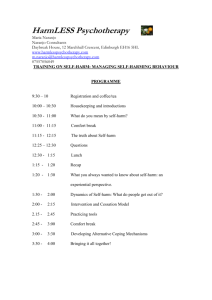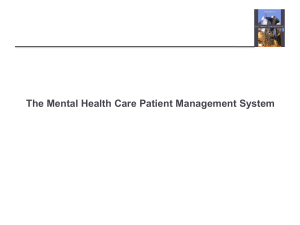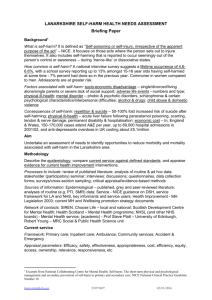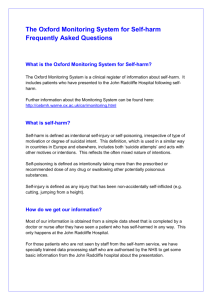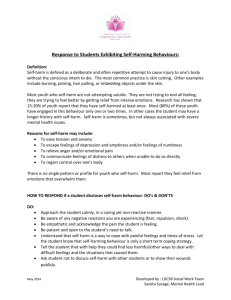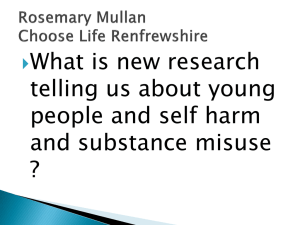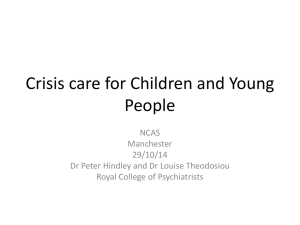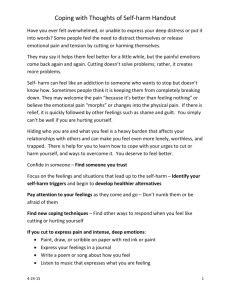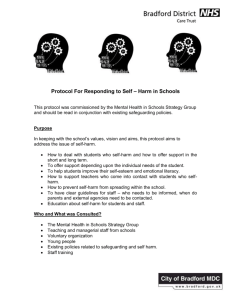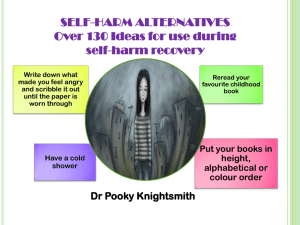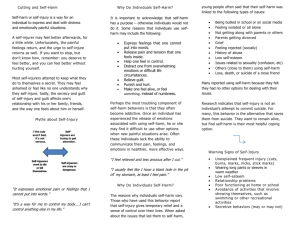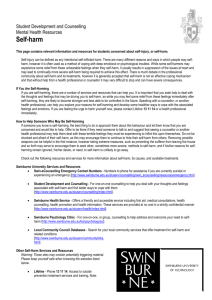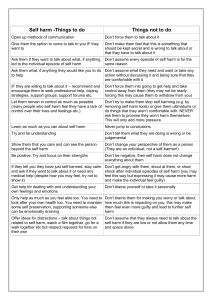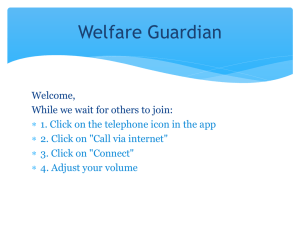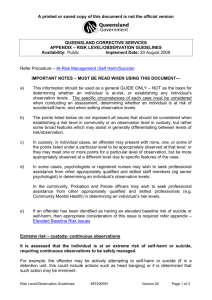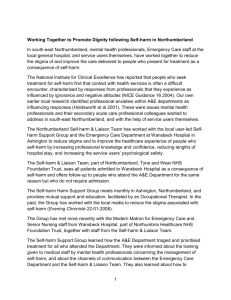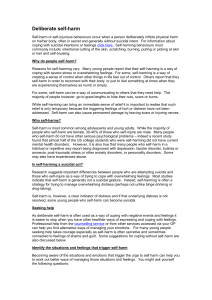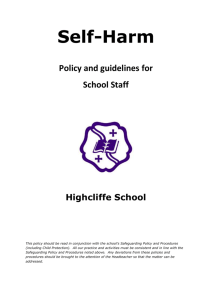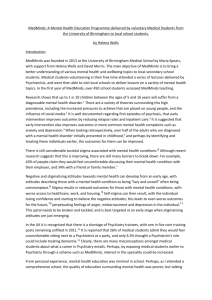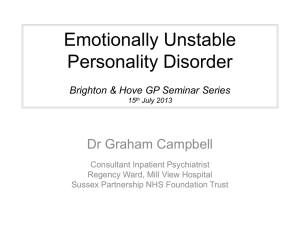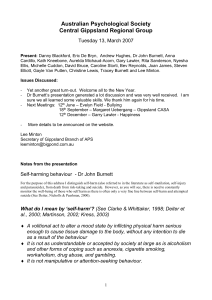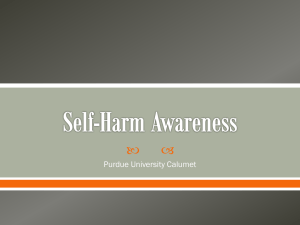Title Dr Pooky Knightsmith
advertisement
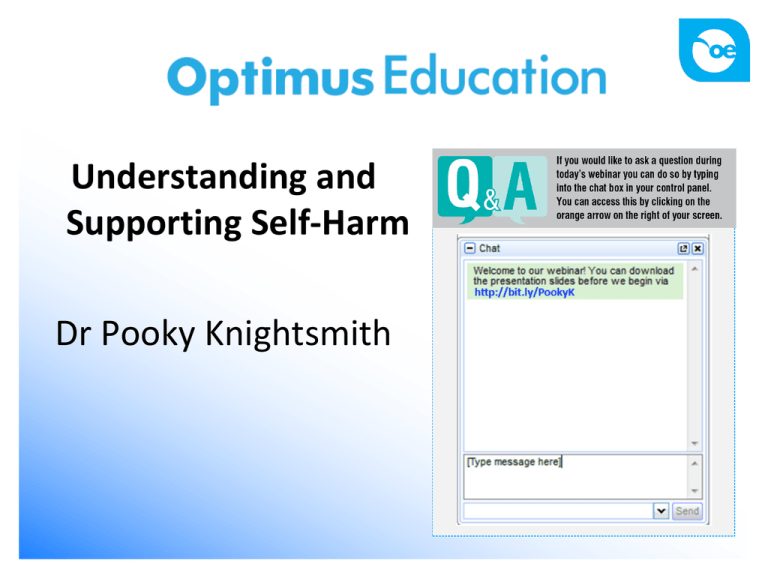
Understanding and Supporting Self-Harm Dr Pooky Knightsmith 1 I will help you understand: What self-harm is and the types we might encounter Why people turn to self-harm Triggers and warning signs How to respond and support What do we mean by self-harm? Harm to oneself in order to cope Cutting, burning, embedding Overdosing, consuming poison Scratching, banging Punching, hitting, biting Eating disorders, drugs, alcohol Self-harm can be direct or indirect e.g. cutting vs risk taking Self-harm is usually conducted at times of anger, distress, fear or worry… Self-harm can be transient or longer term …and is a way of coping with these feelings Negative Emotions Low High Self Harm Cycle Inability to Cope Self-harm Why do people self-harm? Punishment Control Appear ugly Feel cared for Why? Fit in No better ways Manage feelings Feel real Triggers Relationship difficulties (family or friends) Bullying Trauma Exposure via friends, family, media Difficult times of year e.g. anniversaries Increased academic pressure Times of change What signs might alert us? Personality Low or anxious Feels hopeless Secretive / snappy Physical Injuries / scars Clothing Weight change Behaviour Withdrawn / isolated Avoids changing rooms Eating / sleeping How can we help? Address self-harm in relevant policies Whole School Ideas Teach self-harm safely in PSHE Teach resilience and stress management Signpost support Give staff access to training Supporting Individuals Negative Emotions Low High Self Harm Cycle Inability to Cope Self-harm Listen How we can help Make time How can I help? Well done for trying I care OMG! What to What NOT tosay Say Why? Stop… What if a student won’t talk? • Are you the best person? • Start with small stuff • Don’t get angry • Go for a walk • Keep offering support • Signpost support Listen How we can help Offer practical ideas Make time Don’t dismiss Self-Harm Alternatives Talk to a person or helpline Go to a quiet place and scream / scream silently Hit a pillow / soft object Listen to music Look after an animal or sibling Draw red lines on the skin Clench ice cubes Snap elastic band on wrist Write or draw about feelings Listen Involve friends How we can help Offer practical ideas Make time Don’t dismiss Peer Support “The most helpful thing for me during my recovery was having a friend who cared. She was brilliant. She listened when I needed to talk and she answered all sorts of difficult questions from my friends. She made me feel safer.” Safe Peer Support Appropriate support should be put in place (someone to talk to) Consult parents Agree boundaries Discuss role of staff / counsellor etc vs friends with both pupils Ensure friend does not keep secrets. Explore idea of a ‘good friend’ Can always say no Listen Remember the ‘real’ child Involve friends How we can help Offer practical ideas Make time Don’t dismiss Seb – great musician. Really funny. Very untidy. “I think I’m better able to cope with life’s ups and downs than many of my friends now because I’ve had to think carefully about my response to difficult times.” Hear more from Pooky Knightsmith at our Benefits of attending • Take away a clear understanding of CAMHS processes • Identify and support your pupils who self-harm • Support pupils to successfully develop emotional resilience Other speakers presenting on the day include: Dr Nick Barnes, Young People’s Psychiatrist, Haringey Adolescent Outreach Team, NHS Roger Catchpole, Training & Development Manager, Young Minds Peter Connor, Deputy Headteacher, Framwellgate School Find out more at: www.oeconferences.com/mentalhealth14 Webinar Questions & Answers --------------------------------------------------
